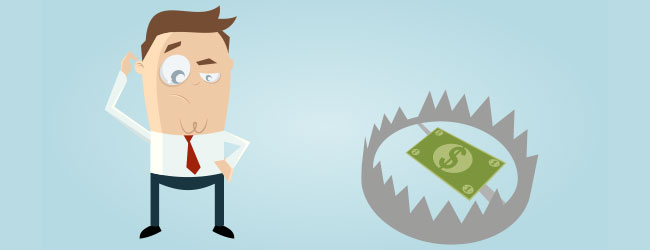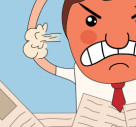Costly Options

A common misconception is: the more options you provide your prospects, the more likely you will make a sale. This thinking comes from the belief that if people are offered choices they are more equipped to make a better decision. The exact opposite proves to be true, more often than not.
Too many choices can confuse customers, but providing professional advice and direction on the ‘best’ product can make the customer feel confident in the purchase.
Focus on a small range rather than every item you could sell when you design your marketing material. Many researchers have experimented with options and most have found that ‘less’ is ‘more’. Try a few designs featuring different products and see which one produces the best results. Your biggest selling item may not bring the most customers through the door. It may be a smaller, unique product you supply that gets the customers interested, and from this position your sales team make the larger sales.
If you currently sell widgets in 30 different colours and flavours, try promoting six, hiding the others away for the purposes of the experiment. If this proves to be more successful you could always use the other colours as ‘limited editions’ to clear the stock later. You could promote one at a time to tap into the full power of scarcity.
Having a large selection may grab people’s attention but often results in fewer sales. When you have a smaller selection you might not attract as many people, but you should increase your conversion rate considerably. If your customers have too many choices it can overwhelm them and in the end they don’t take up any offer. If there are only a couple of options to evaluate and they are presented as the ‘best’ options, consumers can process that information quickly and make a decision.
Consider these principles and test, measure and tweak your options in order to discover the most profitable combination for your business when designing your marketing material. Your website is a great way to test new strategies because it can be easily and instantly modified (providing you have a content management system in place). Try featuring a select range of popular products and eliminating others from your website temporarily to test and measure what impact it has on the online sales.
Packaging is also a great way to create less options and more value for your customers. If you sell a range of products that commonly go together, creating a package or series of packages—for example, Gold, Silver and Bronze—make the decision-making process easier for customers. When investing in something that is considered valuable in terms of price, most people will consider buying an accessory of similar perceived value.
There is a time when adding more options can help increase your success. When a customer is about to make an investment they are often likely to make further purchases related to that product or service. The key here is to make a match on the perceived quality and price of a product. For example, if the customer is about to purchase an expensive brand of shoes, then suggesting a set of socks with the same brand or similar price point will often create more sales. Yet, if you were to promote a budget range of socks you are likely to be less successful. The same is true if the customer was purchasing a cheap pair of shoes and you recommended your most expensive socks. This strategy is known as an ‘up-sell’, and is possible in face-to-face retail sales and targeted marketing material. This will only be effective if the material is designed to guide the eye through the content in a way that sends the right message.
Speed and Graphic Design
People can be very impulsive, particularly when shopping. If your customers can achieve immediate gratification they will be more likely to buy now. When designing marketing material, it’s important to understand what may motivate your target market. Marketing to customers in-store may be very different to how you market to them in their homes through printed material or online. The right message must be used in the right situation.
Inside retail stores, the shopper’s decision to buy may be influenced by their sense of how a product looks, smells, tastes or feels. But in printed marketing material or online, this is not the case. People can’t touch, smell or feel the products, but you can create these kinds of memories through imagery and design. From there you can focus on your call to action.
By using immediacy as one of the benefits of buying a product from your website or printed marketing material, you may be able to improve positive reactions from prospects. Using powerful words in your call to action such as ‘Instantly’, ‘Immediately’, ‘At Once’ or ‘Right Away’, may greatly influence a buying decision, particularly online where ‘instant’ is often the expectation.
Case Study: Mars Revels
The team at Skive, based in the UK created a unique online campaign using a micro-site and social media. The idea was for people to vote to evict their least favourite flavour out of the pack, Big Brother Style. The response was overwhelming for the product with a total of 349,291 votes being cast during the campaign. The coffee flavour was evicted for a period of time while being substituted by a ‘limited edition’ flavour, increasing their perceived value. Mars didn’t confuse it’s customers by including other products with this marketing message but solely focused on the Revels product. This campaign gave a sense of having options, when in fact there are none. It is a mixed bag and you either buy them or you don’t. The decision is easy.



